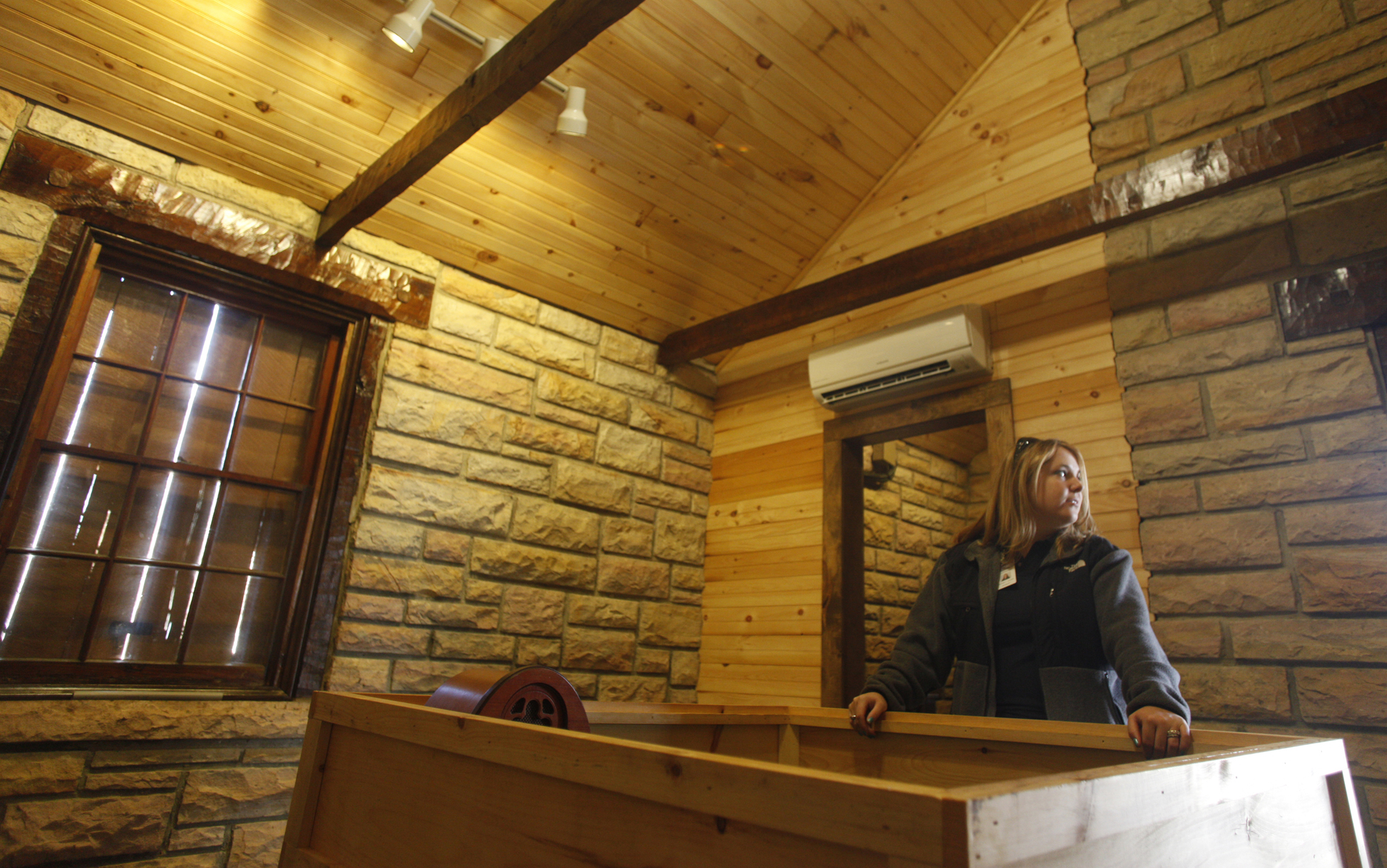CCC museum takes shape in Fort Payne
Friday, January 1, 1904
 Naturalist Brittney M. Hughes stands in the Civilian Conservation Corps museum at DeSoto State Park on Thursday. The Civilian Conservation Corps Museum building at DeSoto State Park in Fort Payne, Ala., is undergoing renovations. The new museum is in one of the original park buildings, constructed between 1933 and late 1941.
Naturalist Brittney M. Hughes stands in the Civilian Conservation Corps museum at DeSoto State Park on Thursday. The Civilian Conservation Corps Museum building at DeSoto State Park in Fort Payne, Ala., is undergoing renovations. The new museum is in one of the original park buildings, constructed between 1933 and late 1941.HOW TO HELPDeSoto State Park naturalist Brittney M. Hughes urges anyone with information, tools, photographs or other artifacts and memorabilia related to Civilian Conservation Corps operations in Fort Payne to email her at Brittney.Hughes@dcnr.alabama.gov or call DeSoto State Park at 256-997-5025
FORT PAYNE, Ala. - Signs of Civilian Conservation Corps work are visible throughout North Alabama's DeSoto State Park, but the story behind the New Deal-era crews who cut the stone to build the park's walls and buildings is just emerging.
CCC camps built public parks all over the nation. That includes the small park building that is on its way to becoming a CCC museum, and the circa-1940 entry gate at the original entrance, park naturalist Brittney M. Hughes said Thursday.
CCC Company 472 Juniors were the first to clear trails, construct cabins and buildings, even build an airport and nine-hole golf course at the mountaintop park. Another CCC company followed a few years later, but Hughes said she's still collecting information about it, though she believes the later group was made up of World War I veterans.
The tiny entrance building is being remodeled and stocked with items to document the CCC's work atop Lookout Mountain, just east of Fort Payne. The building has been pressure-washed, renovated and reroofed, and now Hughes said she's ready to start stocking displays with memorabilia, artifacts and photos. She has some in hand and hopes to get more from CCC crew members' families and relatives.
"It's a big piece of history that has been overlooked for years," park Superintendent Ken Thomas said.
The park got a $10,000 grant to pay for air conditioning, electricity and water supplies and other renovations to the building, where visitors in 1940 paid admission of 10 cents for adults and 3 cents for children, Hughes said.
Another $10,000 grant will fund more technology and possibly pay for help to run the museum, present programs to school groups and perform more research, she said.
Hughes said the park's six maintenance workers are doing most of the restoration work at the museum and CCC-built structures, walls, tables and the like. They even tracked down all nine cups from the grown-over golf greens and cleared one green near the road.
Hughes said she now needs local folks to help fill in the background and put faces on those who left their marks behind, to remind people generations later what it took to cut a state park out of a mountain.